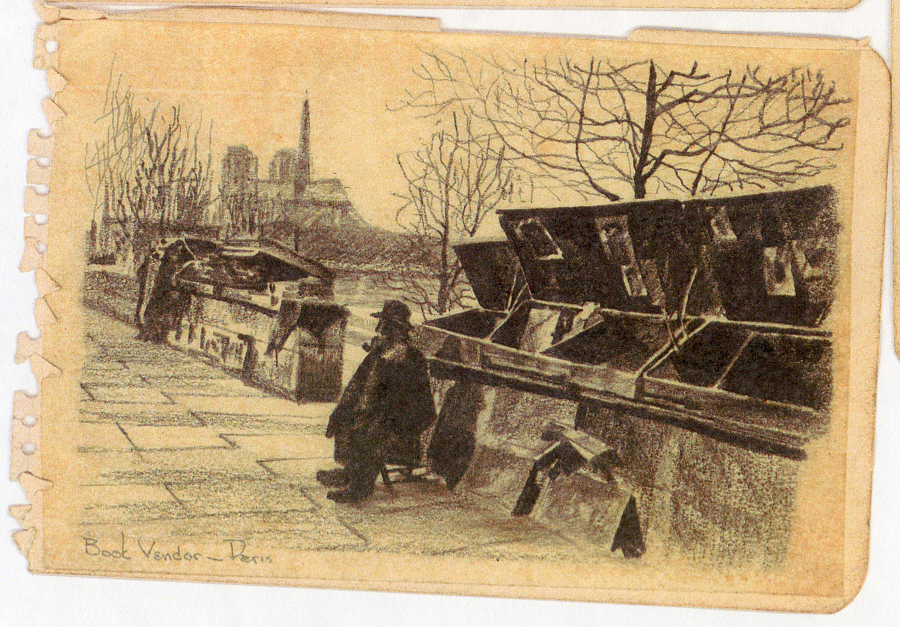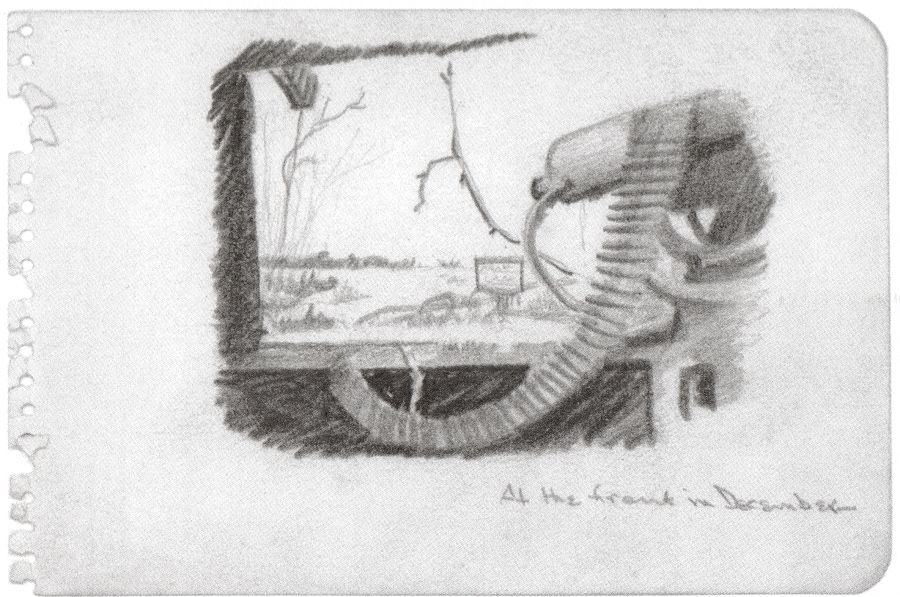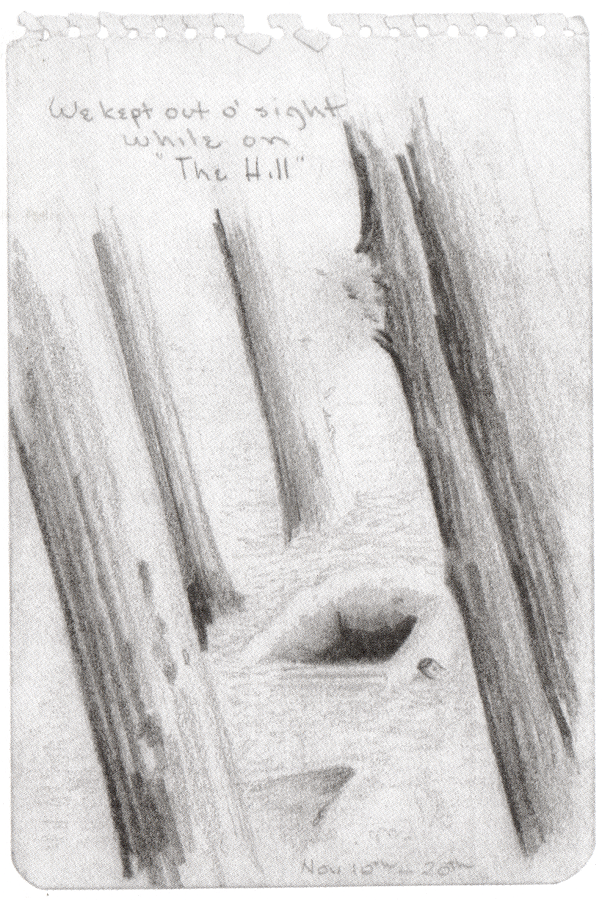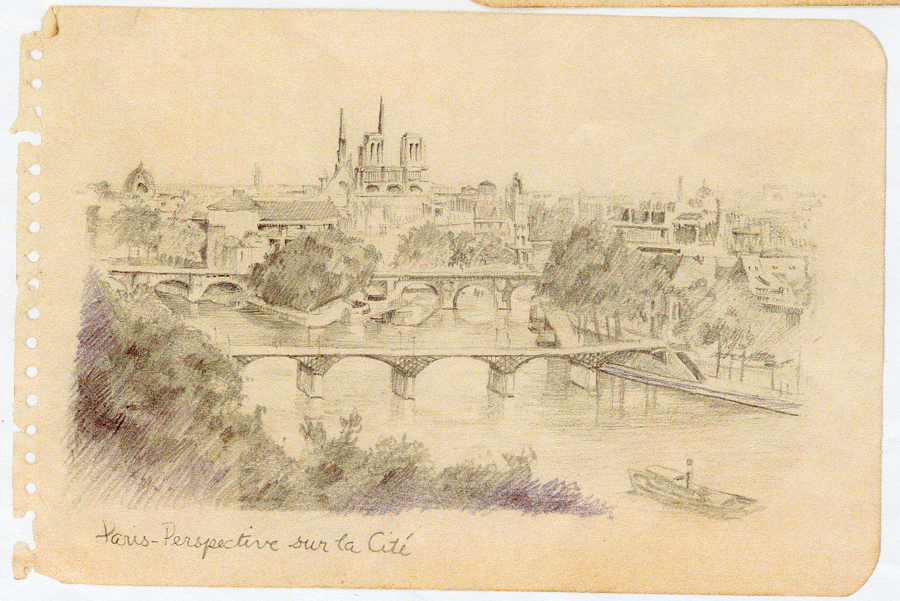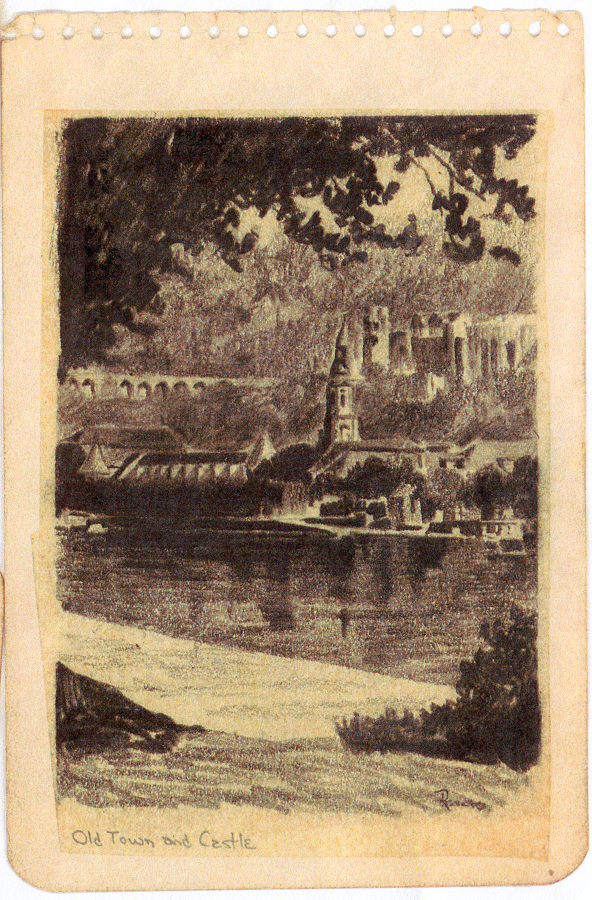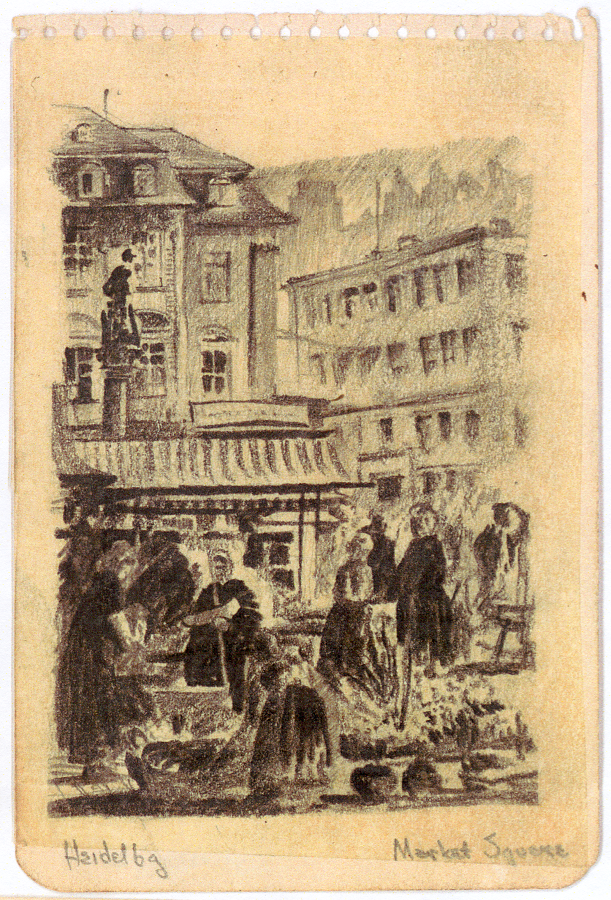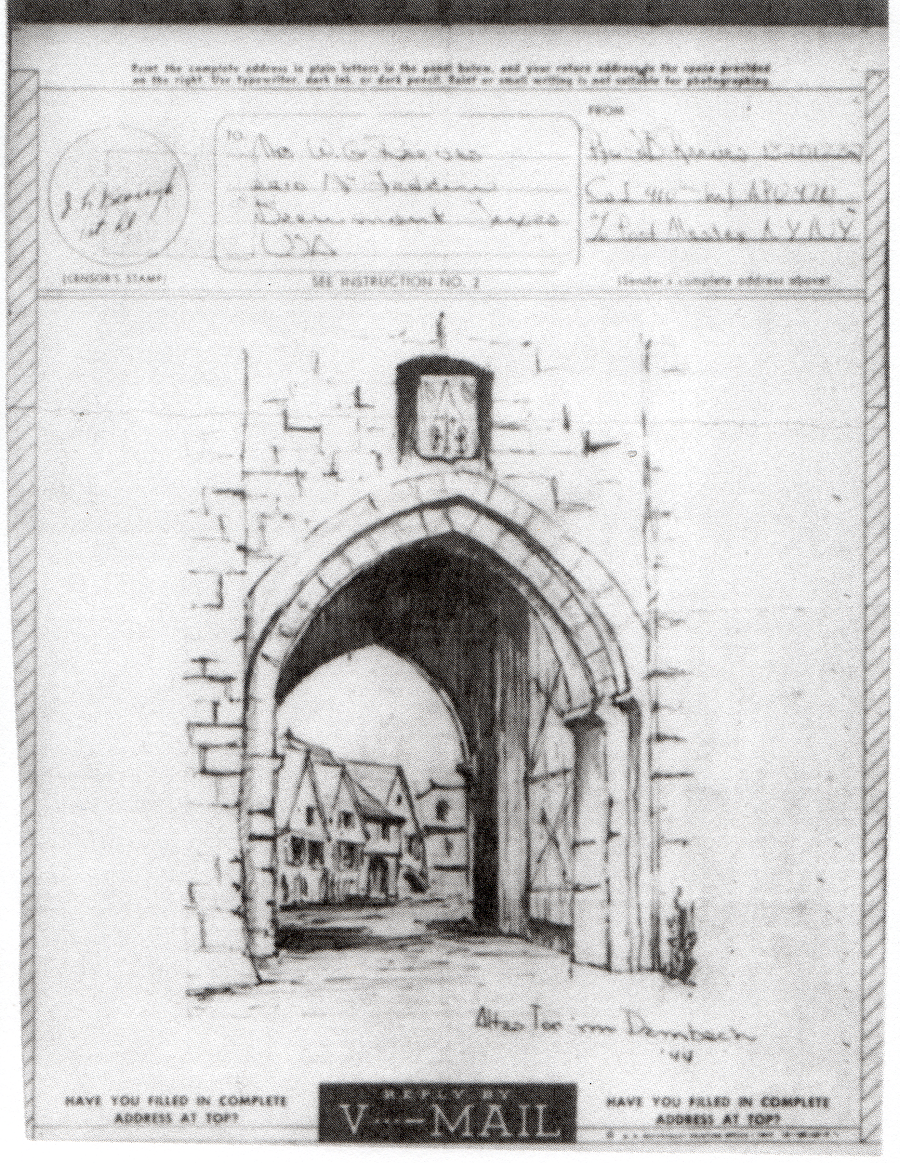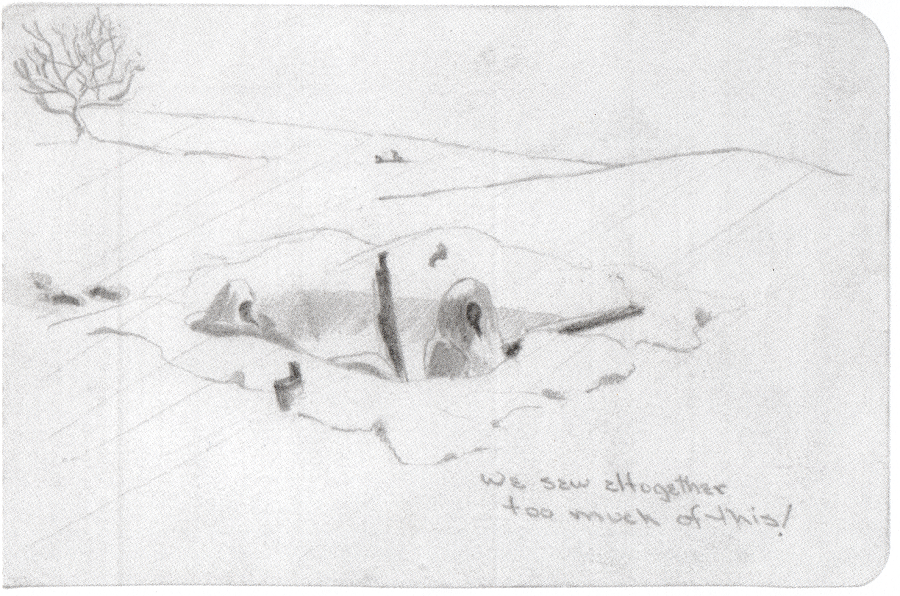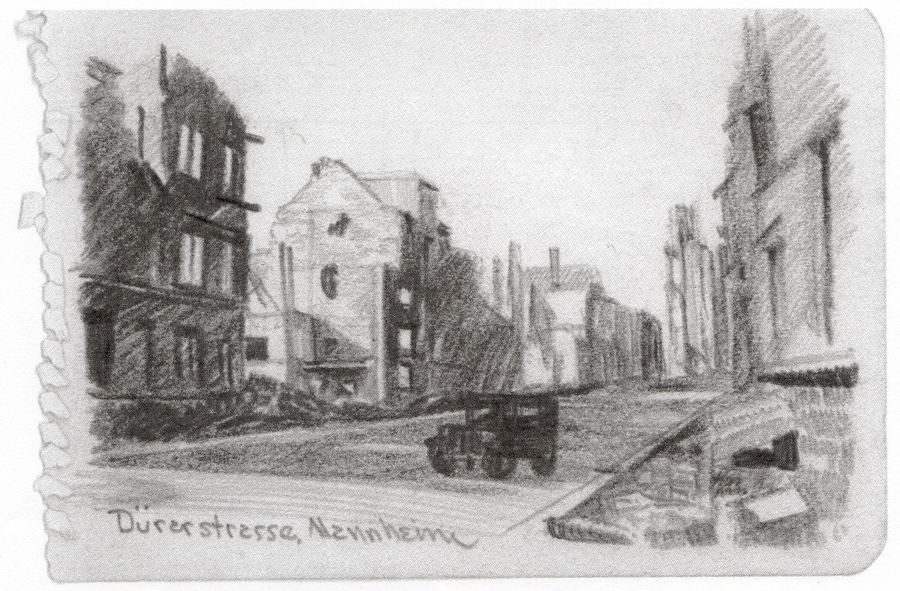The Soldier Artist: Representations of a Soldier’s Role in the European Front, Frank Blair Reeves (UF-340)
By Annemarie Nichols, Intern
While at the University of Texas in 1943, an aspiring architect named Frank Blair Reeves enlisted in the United States Army to fight in World War II. After basic training, he was sent by boat from New York City to Marseilles, France. As he stepped off of the boat, he witnessed the wreck of Marseilles. Numerous bombings left the harbor filled with derelict ships and other bits of rubbish. Mr. Reeves remembers,
“They put us on trucks and we went up into just eastern France to the Vogues Mountains. We went on the Front on November the 11th, which I thought was pretty ironic, being Armistice Day. We fought in the Vogues Mountains and in Alsace Lorraine. This was just slugging it out – day in and day out.”
-Frank Blair Reeves, UF-340
Soon after, Reeves experienced much more of the devastation and privation brought about by war. Since they arrived in November, he and his comrades fought through what was one of the coldest winters Europe had seen in a long time. Soldiers dealt with the cold, trench foot, and other illnesses while fighting German forces.
He sent sketches of the European architecture home to his mother on V-Mail, and he extensively sketched both scenes of the warfront as well as architectural sketches of the surrounding German and French countryside. One sketch depicted men with shrouded faces, sitting in a foxhole amidst the snow. Another depicted the vantage point of a machine gunner looking out onto a sparse winter landscape. These sketches were filled with the loneliness and isolation a soldier experienced in the trenches.
Reeves’s representation of faceless humans and the mechanical and systematic processes of war stripped away the glorified depiction of soldiering painted in American popular culture. His sketches of the front seemingly encapsulated his thoughts many years later:
“Now, World War II was a great time of uncertainty and drastic change, full of tension, crises and loss, waste and, of course, injury. War is a terrible thing, and it shouldn’t happen.”
-Frank Blair Reeves, UF-340
However, his sketches also tied into his passion for architecture. As he traveled through Europe, Mr. Reeves also sketched the detailed spires of cathedrals and painstakingly drew archways and buildings in Strausbourg. As he passed through Germany, he witnessed the destruction of air raids on cities, and he also sketched the rubble and partially standing buildings with great care.
After a bout with chronic bronchitis, he was transferred to limited service in the 7th Army Transportation Corps. Mr. Reeves worked as a draftsman drawing maps for the Red Ball Express. His maps mapped out main lines of transportation to mark safe routes for transportation trucks to take material to the front and bring back German prisoners of war and displaced persons. After V-E day, Mr. Reeves got the chance to study in London for three months with the London Architectural Association. He attended academic lectures (Le Corbusier was present for one of these), sketch problems, and tours of the surrounding countryside. He was able to study architecture in Canterbury, York, and most of his classes were held in the middle of London.
As he was studying architecture in England, he got to experience V-J in London. He remembered, “It was wonderful. On the way from Germany to London, I came through Paris on Bastille Day, and the French had gone crazy there, too. I remember people crawling up lampposts in Piccadilly Square in London, when celebrating V-J Day.” Their enthusiasm matched his as he found that he would soon be going back home.
Soon after, his schooling with the London Architectural Association was finished, and he left London to return to Mannheim, Germany. After he accumulated enough points, he was able to leave the army and return home in March of 1946. Throughout his service in the military, Mr. Reeves continued to feed his passion of architecture, and many of his wartime experiences strengthened his commitment to becoming an architect. Today, he is best known as a former architecture professor at the University of Florida with a longstanding commitment to historical preservation.
For additional information about these and other histories, contact SPOHP, call the offices at (352) 392-7168, and connect with us online today.
